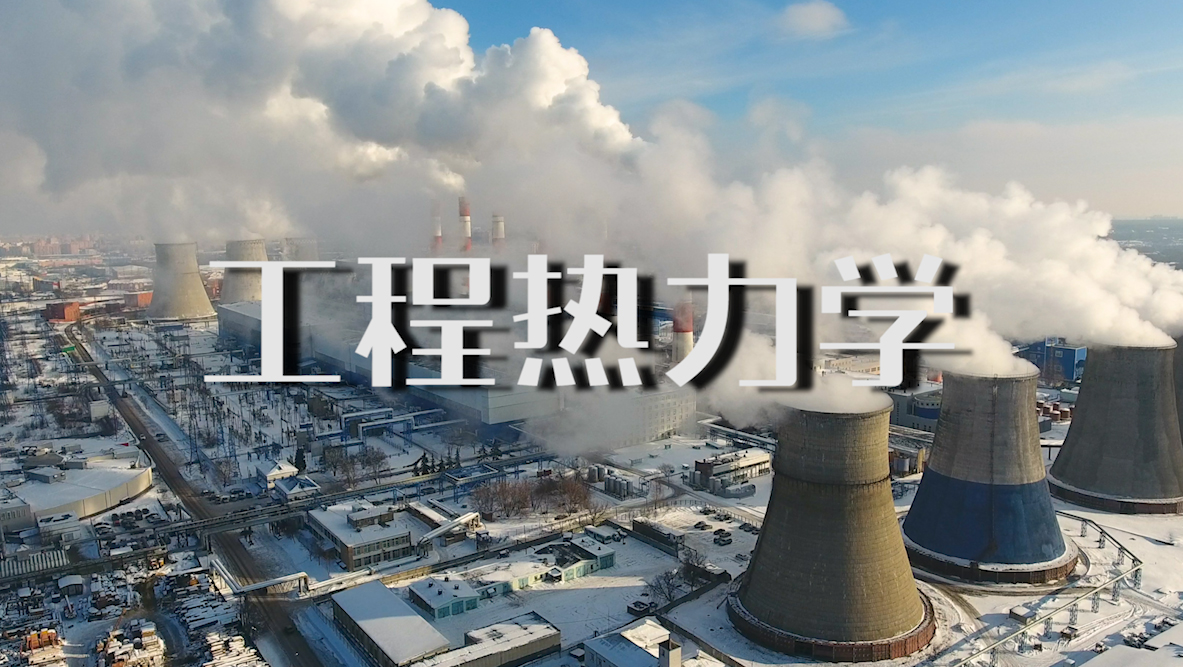
当前课程知识点:Introduction of New Structural Regional Economics > 6. The Practice of New Structural Regional Economics in China > 6.3.3 The Case of Hotan > 6.3.3 The Case of Hotan
返回《Introduction of New Structural Regional Economics》慕课在线视频课程列表
返回《Introduction of New Structural Regional Economics》慕课在线视频列表
大家好 欢迎学习本节的最后一部分内容
最后是新疆和田地区
和田地区是典型的绿洲地区
我在北京大学工作这么几年
几乎每年都去新疆和田
我们做的工作就是
将东部沿海地区的劳动密集型产业
转移至和田地区
就和田而言 其位于
新疆维吾尔自治区南隅
南抵昆仑山
与西藏自治区交界
北临塔克拉玛干大沙漠
与阿克苏相连
少数民族人口占到97%左右
和田地区是我国最为贫困的地区之一
也是脱贫任务
最重的地区之一
2017年末
和田地区总人口约252万人
人均GDP为10790元
仅为全国平均水平的20%
在全国334个地市州中
排名倒数第一
自然环境恶劣
是典型的绿洲经济
人均耕地面积1.2亩
123万适龄劳动人口中
有约60万人处于失业半失业状态
和田为什么贫困 大家知道
它是绿洲经济
人多地少
任何人多地少又以农牧业为生的地方
收入水平必然低
以农业为生的地方
除非像美国和澳大利亚 人少地多
靠农业还可以得到较高的收入水平
世界上任何人口密度高
压力大的地方
依靠农业 收入水平必然低
必然是贫困的
这是一个普遍规律
在人多地少的地方
要解决贫困问题
最主要的办法是产业结构调整
从农业转向现代制造业
这是解决贫困的唯一道路
而成功转向制造业
必须结合当地的劳动力优势
发展劳动密集型产业
这样才能让劳动力充分就业
真正解决贫困问题
不仅要发展
劳动密集型产业
还要创造大量的就业机会
一定要产品能够
进入国际市场
如不能进入大市场
像和田的艾德莱丝绸很漂亮
只用来做当地的民族服装
市场局限在当地
就业仅有几百人
但和田目前需要是60万个就业机会
过去 和田发展
劳动密集型加工出口产业
面临先天的比较劣势:
改革开放初期
和田的人均收入水平
与东部沿海接近
劳动力工资上没有优势
和田地处祖国边陲
远离国内外市场
进入国际市场
交通运输费用高
总成本包括生产成本
和运输成本
毫无竞争力
我们认为和田现在具有
发展劳动密集型加工出口产业的
窗口机遇期:
首先 东部沿海地区经过
改革开放40年来的快速发展
劳动力充分就业
出现短缺
工资水平大幅上升
每月5000元的工资
已经很难招到普通工人
并很难留住
和田地区劳动充裕 工资水平较低
2000块钱就很容易招到工人
劳动密集型加工出口产业的
生产成本
主要是人工成本
和田开始显现优势
其次
经过西部大开发等
这些年交通基础设施改善
运输时间大幅缩短
运输成本也已大幅下降
比如 一个货柜从山东青岛运到和田
现在只需要4天半
从浙江诸暨过来不到5天
从广东过来 也就5到6天的时间
一个货柜或一辆30吨重的卡车
一趟运费两三万
分担到每个单位产品中
成本的增加也就几分钱
再者 自“一带一路”倡议提出以来
出口到中亚 俄罗斯 欧洲
新疆从后方
变为前沿
尤其在
将来瓜达尔港建成后
经过印度洋到欧洲
更是便捷
我们考察了一家鞋企
产品销往俄罗斯
目前做鞋的部件 原材料
从广州 东莞采购
来和田加工
一个集装箱从东莞到和田的时间是5天
如运回深圳出口
需要一个月才到俄罗斯
现在从和田通过铁路运输
五六天就到俄罗斯
反而是有优势
最后
国家对在新疆投资设厂
有各种特殊优惠政策
电价3毛
运费补贴4%
为发展劳动密集型加工
出口产业
创造了新的历史机遇
这是我们对和田扶贫攻坚问题
所形成的看法
并且认为
把劳动密集型加工业发展起来
帮助和田
从绿洲自给自足的农业经济
转变为现代化的制造业经济
但是 对于落实上述思路
我们也有一种紧迫感
东部沿海地区发展
劳动密集型加工出口产业
使得中国成为世界工厂
但是 劳动密集型加工
出口产业受工资成本影响大
上世纪50年代
世界上的劳动密集型加工业
和简单的电子加工业的基地
在日本
随着日本工资上涨
就转移到
我国台湾 香港
和韩国 新加坡等地
上世纪七八十年代
亚洲四小龙成为
新兴工业化经济体
工资上涨以后 正好是我们改革开放
东部沿海地区劳动力工资水平低
再加上接近港口
这些产业就转移到
我国东部沿海地区
随着40年的改革开放
我国现在是中等偏上收入国家
到2025年 很可能
跨过人均GDP12700美元的门槛
成为高收入经济国家
东部沿海地区平均人均GDP
将会普遍超过2万美元
这些产业
不是主动转移到其它工资水平低的地区
就是因为工资高
没有竞争力而倒闭
位于浙江诸暨的大唐镇
号称世界袜都
由于工资上涨
去年一年关闭了4000多家袜企
减少了五六万个就业机会
如我们不赶紧抓住
东部沿海劳动密集型加工业产业集群转移的
窗口机遇期 把这些产业转移过来
再等5年 10年 这些产业转移到
其他工资水平低的国家或地区了
要把他们再吸引过来也就难了
2016年8月
我们开始推动和田脱贫工作
并且提出
在和田 有60多万个富余劳动力
如能发展20万个
现代制造业的就业机会
和田的就业问题就解决了
这是因为
一个制造业就业
有了工资收入 消费会增加
服务业就会增多
此外 制造业发展
还会催生
各种金融服务
运输服务业的发展
所以 一个制造业就业会
有3个甚至4个就业乘数效应
这个就业问题也可以从另外一个角度来看
任何一个经济体
制造业的人数
一般是总人口的10%
我国14亿人口
全国第三次工业普查显示
制造业的就业人数1 24亿人
最近普查人口
和田有250万人
和田在制造业能有20万人
一定就能从自给自足的农业经济变成现代化
城市化的制造业经济
2016年我们带着企业家来到和田
多位企业家表示有兴趣到和田投资
有一家河南许昌
生产假发的企业
决定投资
2017年1月开始
把机器设备运进来
2017年3月开始培训
2017年五月就开始
经青岛出口到美国
据说这是和田第一次出口
现代制造业产品
到国际市场
现在这家企业已经雇佣2000多个工人
每个月出口20几个集装箱
到年底
预计可以雇佣8000人
2018年
我们看到了和田发生显著的变化
信心大增
从2017年只有
一家劳动密集加工出口企业
来投资
近半年来
已有203家企业投资
创造了近五万个就业
并且还有84家企业签了合同
只要厂房一落成即可进驻
已经进驻的企业也都有
扩大规模的计划
远远超乎我们原来的预期
对于和田以及南疆其它同样是绿洲经济的
喀什 阿克苏 克州等地而言
东部劳动力密集产业的转移
是千载难逢的
窗口机遇期
如果没有抓住
东部劳动力密集型产业转移的机遇期
将来要再实现工业化现代化城市化会是
困难重重
贫困问题难于解决
这个机遇期的时间不长
可能就只还剩五年窗口期
如果抓住这个窗口期
2020年时在南疆800多万人口中
造100万个制造业就业机会
那么
2020年“实现全面脱贫”
2021年“实现全面稳定”的目标就会有保障
今天的课程到此就结束了
非常感谢大家的聆听 谢谢
-1.1.1 China's Physical Geography
--1.1.1 China's Physical Geography
--1.1.1 Test
-1.1.2 Hu Line
--1.1.2 Test
-1.1.3 Economic catch-up of the central and western China
--1.1.3 Economic catch-up of the central and western China
--1.1.3 Test
-1.2.1 Overview of China’s economy
--1.2.1 Overview of China’s economy
--1.2.1 Test
-1.2.2 Coastal special economic zones in China
--1.2.2 Coastal special economic zones in China
--1.2.2 Test
-1.2.3 Western Development strategy in China
--1.2.3 Western Development strategy in China
--1.2.3 Test
-1.2.4 Northeast China Revitalization Plan
--1.2.4 Northeast China Revitalization Plan
--1.2.4 Test
-1.2.5 Rise of Central China Plan
--1.2.5 Rise of Central China Plan
--1.2.5 Test
-1.3.1 Coordinated regional development and main functional area
--1.3.1 Coordinated regional development and main functional area
--1.3.1 Test
-1.3.2 China’s urban agglomeration pattern and the economic effect
--1.3.2 China’s urban agglomeration pattern and the economic effect
--1.3.2 Test
-2.1 Agricultural location theory
--2.1 Agricultural location theory
--2.1 Test
-2.2 Growth Pole Theory
--2.2 Test
-2.3 The Stages of Economic Growth
--2.3 The Stages of Economic Growth
--2.3 Test
-2.4 Pole & Axis System Theory
--2.4 Pole & Axis System Theory
--2.4 Test
-2.5 Center-periphery theory
--2.5 Test
-3.1 Why New Structural Economics
--3.1 Why New Structural Economics
--3.1 Test
-3.2 The Theoretical Foundation of New Structural Economics
--3.2 The Theoretical Foundation of New Structural Economics
--3.2 Test
-3.3 Does New Structural Economics Offer Explanations?
--3.3 Does New Structural Economics Offer Explanations?
--3.3 Test
-3.4 Application for Industrial Policy
--3.4 Application for Industrial Policy
--3.4 Test
-3.5 Does the idea of New Structural Economics work?
--3.5 Does the idea of New Structural Economics work?
-4.1 Regional Externality
--4.1 Test
-4.2 Endowment Structure Transformation
--4.2 Endowment Structure Transformation
--4.2 Test
-4.3 Role Boundary of Facilitating Government
--4.3 Role Boundary of Facilitating Government
--4.3 Test
-4.4 Spatial Optimal Equilibrium
--4.4 Spatial Optimal Equilibrium
--4.4 Test
-4.5 Evolution of Dynamic Spiral
--4.5 Evolution of Dynamic Spiral
--4.5 Test
-5.1 China's Development Experience and OFDI
--5.1 China's Development Experience and OFDI
--5.1 Test
-5.2 Commonness and New Trends of Developing Countries
--5.2 Commonness and New Trends of Developing Countries
--5.2 Test
-5.3 Industrialization of Developing Countries with Special Economic Zones
--5.3 Industrialization of Developing Countries with Special Economic Zones
--5.3 Test
-5.4 Growth Identification and Facilitation Framework (GIFF)
--5.4 Growth Identification and Facilitation Framework (GIFF)
--5.4 Test
-5.5 GIFF in Practice and Case Studies (Nigeria, Benin and Uzbekistan)
--5.5 GIFF in Practice and Case Studies (Nigeria, Benin and Uzbekistan)
--5.5 Test
- 6.1.1 The global competitiveness model and its theoretical basis
-- 6.1.1 The global competitiveness model and its theoretical basis
--6.1.1 Test
- 6.1.2 The Brief introduction of the Theory of County Economic Competitiveness
-- 6.1.2 The Brief introduction of the Theory of County Economic Competitiveness
--6.1.2 Test
- 6.2.1 Situation of the Chinese Counties: Development Stage、Location Characteristics and Natural Res
-- 6.2.1 Situation of the Chinese Counties: Development Stage、Location Characteristics and Natural Res
--6.2.1 Test
- 6.2.2 The other Situation of the Chinese Counties and The Case of Qinyuan Pencil
-- 6.2.2 The other Situation of the Chinese Counties and The Case of Qinyuan Pencil
--6.2.2 Test
- 6.2.3 The County's Development Strategy (comparative advantage) Analysis
--6.2.3 The County's Development Strategy (comparative advantage) Analysis
--6.2.3 Test
-6.2.4 The Other County's Development Strategy (comparative advantage) Analysis and Conclusion
--6.2.4 The Other County's Development Strategy (comparative advantage) Analysis and Conclusion
--6.2.4 Test
-6.3.1 The Case of Jinjiang and Guanling
--6.3.1 The Case of Jinjiang and Guanling
--6.3.1 Test
- 6.3.2 The Case of Qianyang and Changzhi
-- 6.3.2 The Case of Qianyang and Changzhi
--6.3.2 Test
- 6.3.3 The Case of Hotan
-7.1.1 Targeted Poverty Alleviation Strategy
--7.1.1 Targeted Poverty Alleviation Strategy
--7.1.1 Test
-7.1.2 Cases of the Old Revolutionary Base Areas
--7.1.2 Cases of the Old Revolutionary Base Areas
--7.1.2 Test
-7.2 Growth Identification and Industrial Policy: Jilin Revitalization
--7.2 Growth Identification and Industrial Policy: Jilin Revitalization
--7.2 Test
- 7.3.1 The Carrying Capacity of Yangtze River Economic Belt
-- 7.3.1 The Carrying Capacity of Yangtze River Economic Belt
--7.3.1 Test
- 7.3.2 The Development of Yangtze River Economic Belt
--7.3.2 The Development of Yangtze River Economic Belt
--7.3.2 Test
-7.4 Growth Identification and Facilitation: Integration of Yangtze River Delta and High-quality Deve
--7.4 Growth Identification and Facilitation: Integration of Yangtze River Delta and High-quality Deve
--7.4 Test
-Final examination


